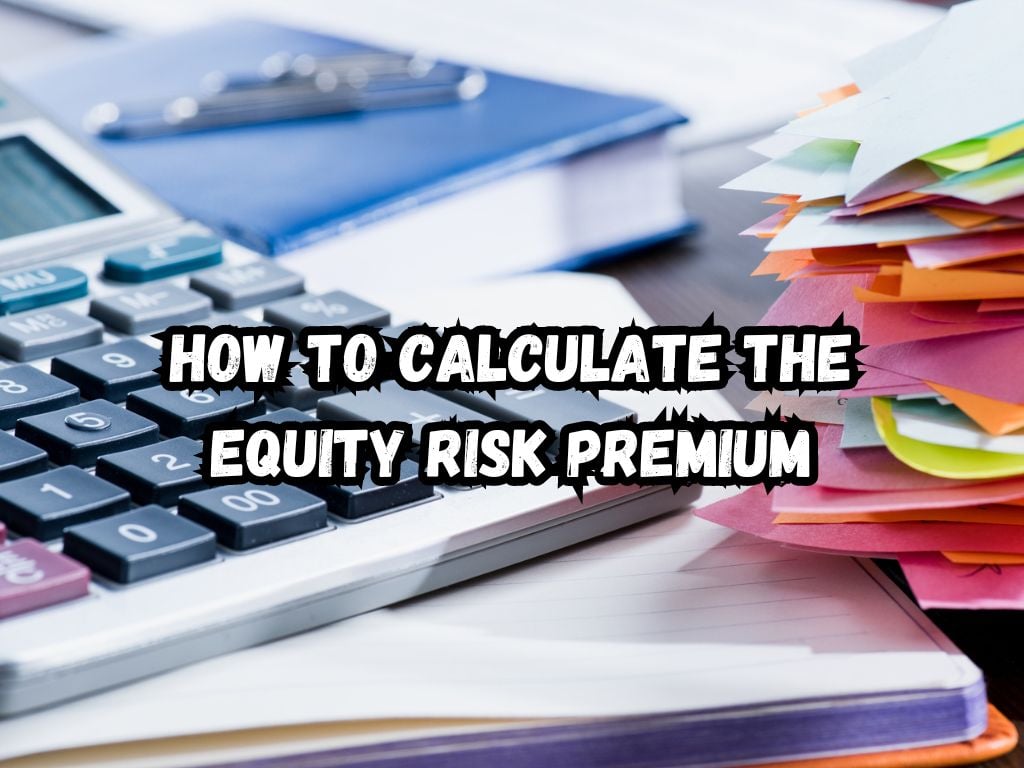The concept of the Equity Risk Premium (ERP) is pivotal in the financial world, guiding investors to measure the additional return anticipated from investing in the risky equity market over opting for a risk-free asset.
This article entails a comprehensive dive into how to calculate the equity risk premium, theoretical basis, and significant implications of the ERP, providing investors with a well-rounded understanding that is paramount for risk assessment and investment decision-making.
Core Theoretical Foundations of the Equity Risk Premium
The essence of the Equity Risk Premium lies in its function as the differential return on risky investments compared to risk-free alternatives.
This fundamental concept underpins the risk-reward balance, with a higher ERP pointing towards potentially greater returns, albeit accompanied by elevated risk levels.
Thus, ERP serves as a crucial indicator for weighing investment options within the capital markets domain.
Diverse Methodologies for Calculating the Equity Risk Premium
The Historical Returns Approach
Leveraging past market performance, this method projects future premiums under the assumption that historical return patterns will persist.
It serves as a backward-looking approach that frames future expectations based on the past.

The Survey-Based Technique
Extracting insights from financial experts, this method pools together expectations regarding future premiums.
This forward-looking approach primarily depends on the professional judgment of financial analysts, economists, and fund managers.
The Implied ERP Calculation Method
A forward-looking strategy that infers expected returns through current market valuations, factoring in the market’s anticipations about the future.
This method evaluates how current market prices embed investors’ return expectations over risk-free investments.
How to Calculate the Equity Risk Premium
Estimation of Expected Stock Returns
Beginning with an analysis of the stock’s potential future returns, utilizing historical performance and market analyses as a foundation for projections.
Identification of a Reliable Risk-Free Rate
Securing a steadfast risk-free rate, typically government bond yields, to serve as a benchmark for calculating the premium.
Determination of the Market Risk Premium
The crucial step involves calculating the market risk premium by deducting the risk-free rate from the expected market returns. This metric quantifies the additional compensation investors seek for taking on market risk.
Integration of Beta in ERP Determination
Incorporating the stock’s beta, or its relative market volatility, is crucial since stocks with a higher beta demand a larger equity risk premium for investor attraction.
Practical Advice and Expert Insights for Accurate ERP Calculation
Maintaining accuracy in ERP calculations is key; utilize credible data sources and consistently update your data pool. It’s important to note that changes in market conditions can influence ERP values, necessitating adjustments based on economic trends and market dynamics.

Tools and Resources for Simplifying ERP Calculations
Though financial calculators and software readily available online can facilitate ERP calculation, engaging in manual computation deepens one’s understanding of the factors influencing ERP.
Case Studies: Real-World Applications of ERP
Exploring hypothetical scenarios, such as a publicly traded company projected to return 10% against a 2% risk-free rate and with a beta coefficient of 1.5, can illuminate the implications of accurately or inaccurately calculated ERPs.
Misestimations can steer investors towards underestimating risks or overestimating returns, underscoring the need for precise financial analysis.
Addressing Frequently Asked Questions about the Equity Risk Premium
The Average Range of ERP
While the average ERP can oscillate, it generally falls within a 4% to 6% range, albeit varying with economic conditions and market sentiment.
Sectoral Variation in ERP
ERPs diverge across industries, reflecting sector-specific risk levels. Therefore, sectors brimming with uncertainty typically exhibit higher ERP values.
ERP’s Predictive Ability Regarding Market Performance
While not a definitive forecaster, ERP aids in setting expectations for returns vis-à-vis risk, providing invaluable insights for investors.
The Discrepancy in ERP Estimates Across Different Models
Variations in model-based ERP estimates stem from the distinct assumptions and data sources that each model employs, captaining towards divergent ERP forecasts.
Conclusion:
Understanding and computing the Equity Risk Premium is more than an academic exercise; it is an essential skill in investment analysis.
This expansive guide intends not only to elucidate the theoretical and practical facets of ERP but also to underscore its significance in shaping robust investment strategies and decisions.
As the financial landscape evolves, so too must the investor’s proficiency in continuously honing their approach to calculating and interpreting ERP.
In conclusion, ERP calculation embodies a fundamental analytical task in investment decision-making. Engaging deeply with the methods and implications of ERP calculation fosters a nuanced understanding of market dynamics and risk assessment, laying the groundwork for informed and strategic investment choices.


 Tags:
Tags:










